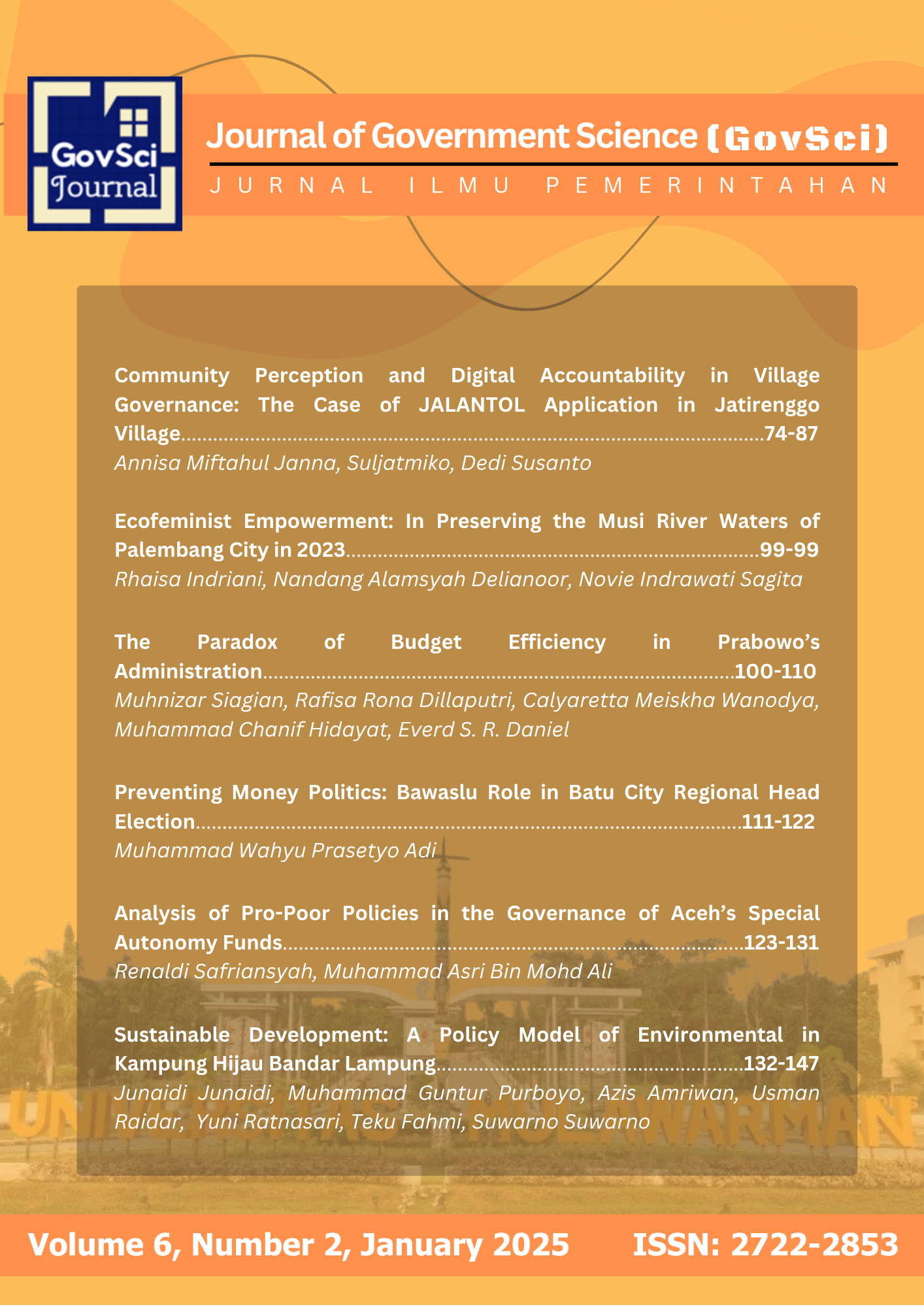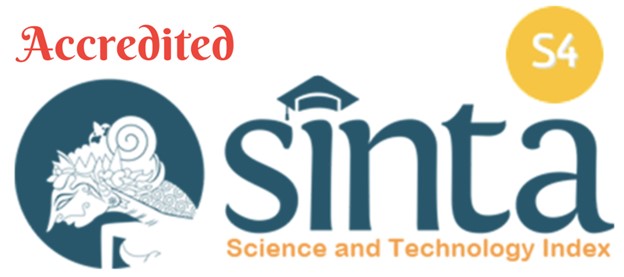Author Guidelines
Author Guidelines
Submission Preparation Checklist
As part of the submission process, authors are required to check off their submission's compliance with all of the following items, and submissions may be returned to authors that do not adhere to these guidelines.
- The submission has not been previously published, nor is it before another journal for consideration (or an explanation has been provided in Comments to the Editor).
- Berkas kiriman dalam format file dokumen OpenOffice, Microsoft Word, RTF, atau WordPerfect.
- Language: Manuscripts must be written in either English.
- Author Identification: Authors’ names should be clearly stated without titles, accompanied by appropriate affiliations and corresponding email addresses.
- Article Length: Submissions should be between 4,500 to 6,500 words in length. in Tahoma size 10 pts and 1.5 space.
- Referencing Style: Journal of Government Science (GovSci) : Jurnal Ilmu Pemerintahan employs the 7th edition of the American Psychological Association (APA) citation style. Authors are encouraged to use citation management tools such as Mendeley, Zotero, or EndNote to manage and format references.
- Manuscript Format: Articles must be written in accordance with the latest Journal of Government Science (GovSci) : Jurnal Ilmu Pemerintahan.
Article Structure
Authors must adhere to the following structure when preparing manuscripts for the Journal of Government Science (GovSci) : Jurnal Ilmu Pemerintahan:
- Title:The title should clearly reflect the formal object, material object, and context of the study, and should not exceed 15 words.
- Abstract:The abstract should be concise, clear, and informative, with a maximum length of 250 words. It must provide a brief introduction to the problem, the focus and objectives of the paper, followed by a statement on the methodology and a summary of the research findings.
- Introduction:The introduction should be structured to include the following four elements:
- First: Explanation of the social facts that highlight the importance of the issue or phenomenon being studied.
- Second: Discussion of the literature gaps or shortcomings in previous studies related to the issue or phenomenon under review.
- Third: Evaluation of prior studies, positioning the focus of the current study.
- Fourth: Articulation of the research question and hypotheses or arguments being tested to address the study's objectives.
- Methodology:The methodology section must be explicit and cover the following five elements:
- First: Justification for selecting the issue or phenomenon as the study focus.
- Second: Type of study and data used.
- Third: Data sources and the selection process.
- Fourth: Techniques or methods employed for data collection.
- Fifth: The process and stages of data analysis performed.
- Results and Discussion:
The Results and Discussion section should be clear and relevant, based on the following eight characteristics:
1. A detailed description of the forms of the issue or phenomenon studied.
2. A critical explanation of the factors that influence the emergence of the issue or phenomenon.
3. Transformative implications of the issue or phenomenon under study.
4. A summary of the entire data set presented in the results section.
5. Reflections on the causes that emerged from the summarized data.
6. Interpretation of the effects resulting from the reflected data.
7. Comparison paragraphs that highlight the differences between the findings of the current study and previous studies.
8. Conceptual, methodological, or policy recommendations as solutions. - Conclusion:The conclusion should be clear and include the following three elements:
- First: Key findings relevant to the study's focus or research questions.
- Second: Significance or contributions of the study in terms of concepts, methods, or theories relevant to the subject matter.
- Third: Study limitations, which will serve as recommendations for future research.
- References:References must be formatted using the APA 7th edition citation style and managed through Mendeley, Zotero, or EndNote. The reference list should be in Tahoma size 10 pts and single space. References include at least 20 journal articles consisting of 80% international journal articles equipped with doi.
- All manuscripts are anonymously studied by reviewers appointed by the editor according to their expertise. The author is given a chance to revise the manuscript based on the reviewer’s or the editor’s recommendation/advice. The decision of publication or rejection will be informed through the author’s email address.
- The editor has the right to modify and correct the spelling, writing, and grammar of the published manuscript.
- Everything related to citing permission or computer software usage in writing the manuscript or any other things related to copyright done by the author, along with all its legal consequences, becomes the author’s full responsibility.








